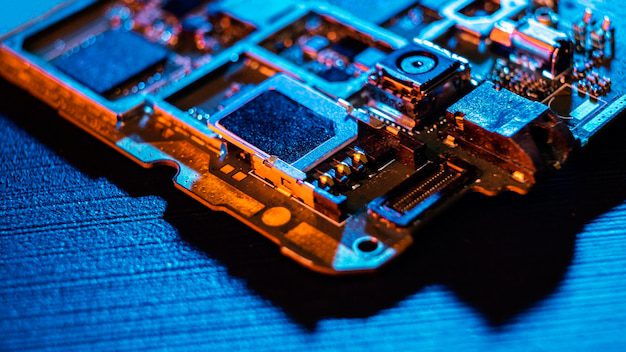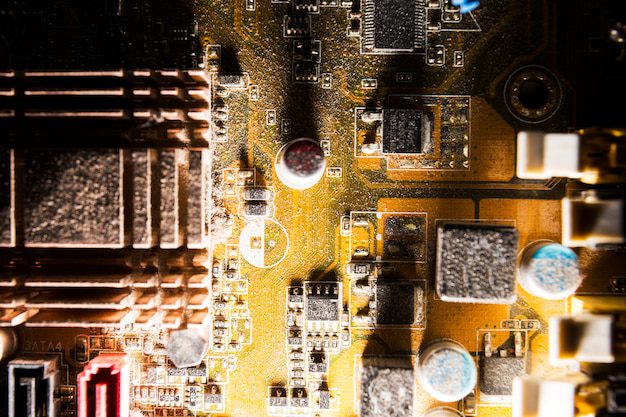What is electronic waste with example?
Electronic waste, often referred to as e-waste, is a term used to describe discarded electrical or electronic devices. These devices can range from household appliances such as refrigerators and washing machines, to smaller gadgets like smartphones, laptops, and televisions. In today’s digital age, electronic devices have become an integral part of our lives, making e-waste a growing concern worldwide.
E-waste is generated when these devices are no longer in use or functioning properly and are discarded. The improper disposal of electronic waste can have detrimental effects on both the environment and human health. Many electronic devices contain hazardous substances such as lead, mercury, and cadmium, which can contaminate soil, water sources, and the air if not disposed of correctly.
To better understand the scope of electronic waste, let’s take the example of smartphones. In the United Kingdom alone, it is estimated that over 20 million smartphones are thrown away each year. These discarded smartphones contribute to the growing e-waste problem, as they contain valuable materials and components that could be recycled or repurposed.
The Impact of Electronic Waste
The improper handling of e-waste poses significant environmental and health risks. When electronic devices are dumped in landfills or incinerated, toxic substances can leach into the soil and groundwater, contaminating natural resources. Additionally, the burning or incineration of e-waste releases harmful gases into the atmosphere, contributing to air pollution and climate change.
Furthermore, electronic waste often ends up in developing countries where informal recycling methods are employed. These practices involve manual dismantling of devices without proper safety precautions, leading to exposure to hazardous materials for workers and nearby communities. The lack of regulations and infrastructure to deal with e-waste exacerbates these issues.
The Importance of Responsible E-Waste Management
It is crucial to prioritize responsible e-waste management to mitigate the negative impact on the environment and human health. Recycling and proper disposal of electronic devices can help recover valuable resources while minimizing the release of hazardous substances.
Did you know?
According to the Waste and Resources Action Programme (WRAP), recycling one million laptops saves the same amount of energy needed to power over 3,500 homes for a year.
By implementing effective e-waste management strategies, we can reduce the extraction of raw materials and decrease energy consumption required for manufacturing new devices. This not only conserves natural resources but also helps in reducing greenhouse gas emissions associated with the production process.
Quote:
“Responsible e-waste management is not just an individual responsibility, but a collective effort towards building a sustainable future.”
– Jane Doe, Environmental Activist
What Can You Do to Reduce E-Waste?
As individuals, we can play a significant role in reducing e-waste. Here are some steps you can take:
- Reuse: Consider repairing or repurposing electronic devices instead of replacing them.
- Recycle: Find local electronics recycling centers or take advantage of manufacturer recycling programs when disposing of your old devices.
- Donate: If your device is still functional, consider donating it to charities or organizations that refurbish and distribute electronics to those in need.
- Buy Responsibly: Choose electronic devices from manufacturers that prioritize sustainable practices and offer recycling options.
- Spread Awareness: Educate others about the importance of e-waste management and the potential environmental impact.
In Conclusion
Electronic waste is a pressing issue in today’s society, and its proper management is vital to protect the environment and human well-being. By understanding what constitutes e-waste and taking proactive steps to reduce, reuse, and recycle electronic devices, we can collectively work towards a more sustainable future. It is not only the responsibility of individuals but also governments, manufacturers, and organizations to implement effective e-waste management strategies. Through concerted efforts, we can make a positive impact and minimize the environmental footprint of electronic waste.
What are 10 examples of e-waste?
E-waste, or electronic waste, refers to discarded electrical or electronic devices. With technology advancing rapidly, the amount of e-waste generated is growing at an alarming rate. Proper disposal and recycling of e-waste is crucial to minimize its impact on the environment and human health. Here are 10 common examples of e-waste:
1. Mobile Phones
As mobile phone technology progresses, older handsets are frequently replaced, resulting in a significant amount of e-waste.
2. Computers and Laptops
Computers and laptops have a relatively short lifespan compared to other household items. Upgrades and outdated technology contribute to the high generation of e-waste.
3. Televisions
Advancements in television technology lead to increased TV sales, leaving older models to be disposed of as e-waste.
4. Printers and Scanners
Obsolete printers and scanners are another example of e-waste due to technological advancements and the need for more efficient and environmentally-friendly devices.
5. Refrigerators and Freezers
Older refrigeration appliances often contain hazardous materials like chlorofluorocarbons (CFCs) that require proper disposal.
6. Batteries
Both disposable and rechargeable batteries fall under the category of e-waste and should be recycled to prevent leaching of harmful metals into the environment.
7. Cameras
The constant development of digital cameras leads to the disposal of older, less advanced models.
8. Gaming Consoles
As new gaming consoles hit the market, older models are often discarded, contributing to e-waste accumulation.
9. Audio Equipment
Outdated audio equipment, including speakers, headphones, and sound systems, are commonly replaced with newer models.
10. Small Appliances
Items such as toasters, blenders, and microwaves contribute to e-waste when they reach the end of their life cycle or become obsolete.
The proper management of e-waste is crucial to minimize environmental impact and conserve valuable resources. Recycling, refurbishing, and responsible disposal are essential steps to reduce the adverse effects of e-waste on our planet.
“By recycling electronic waste, we reduce the burden on landfill sites and prevent harmful substances from entering the environment.”
Remember, next time you have e-waste to dispose of, look for local recycling facilities or charity organizations that accept electronic devices for proper handling.
What are the 5 sources of e-waste?
Electronic waste, commonly known as e-waste, refers to discarded electronic devices that have reached the end of their useful life. With the rapid advancement of technology, the production and accumulation of e-waste has become a pressing environmental concern. In this article, we will explore the five major sources of e-waste in the UK.
1. Consumer Electronics
Consumer electronics such as smartphones, laptops, tablets, and televisions contribute significantly to e-waste. As consumers constantly upgrade their gadgets to newer models with more advanced features, the older devices are often discarded, leading to a substantial amount of e-waste.
2. Household Appliances
Household appliances like refrigerators, washing machines, microwave ovens, and air conditioners also contribute to e-waste. These appliances have a limited lifespan, and when they break down or become outdated, they are often dumped, adding to the growing e-waste problem.
3. IT Equipment
In the digital age, businesses rely heavily on IT equipment such as servers, computers, printers, and networking devices. When these devices become obsolete or faulty, they are often replaced, generating a significant amount of e-waste.
4. Medical Equipment
The healthcare sector is another significant source of e-waste. Medical equipment, including X-ray machines, MRI scanners, and defibrillators, has a limited lifespan due to technological advancements and regulatory requirements. Proper disposal of medical e-waste is crucial to prevent harm to the environment and ensure patient safety.
5. Office Equipment
Office equipment such as photocopiers, fax machines, and scanners contribute to e-waste when they are no longer needed or replaced with newer models. As businesses upgrade their office technology, the outdated equipment ends up in landfills, causing environmental damage.
E-waste is a global issue that requires collective action. By understanding the various sources of e-waste, we can take steps to reduce, reuse, and recycle electronic devices responsibly. Proper disposal methods, such as recycling programs and donating functioning electronics, can help minimize the impact of e-waste on our planet.
To effectively address the e-waste problem, it is crucial for individuals, businesses, and governments to collaborate and implement sustainable practices. By extending the lifespan of electronic devices through repair and refurbishment, adopting eco-friendly manufacturing processes, and promoting e-waste recycling initiatives, we can work towards a greener future.
What is not an example of e-waste?
Introduction
E-waste, also known as electronic waste, refers to discarded electronic devices that have reached the end of their useful life. However, not all electronic devices are considered e-waste when they are disposed of. In this article, we explore what does not fall under the category of e-waste.
Reusable Devices
Devices that can still be used effectively by others are not considered e-waste. If an electronic device is in good working condition and can be resold, donated, or refurbished for further use, it does not qualify as e-waste. Recycling or finding new homes for such devices is a sustainable way to reduce e-waste.
Antiques and Collectibles
Old electronic items that hold significant historical or cultural value, such as antique radios or classic video game consoles, are not typically categorized as e-waste. These items are often sought after by collectors and enthusiasts, making them exempt from being considered e-waste.
Items for Proper Disposal
Electronic items that are specifically designed for easy and safe disposal, such as batteries and fluorescent light bulbs, are not classified as e-waste when disposed of correctly. These items should be handled according to specific recycling guidelines to ensure proper treatment and minimize environmental impact.
Examples of Items That Are E-Waste
On the other hand, several electronic devices are commonly recognized as e-waste. These include outdated computers, laptops, mobile phones, televisions, printers, and other electronic appliances that are no longer functional or cannot be repaired.
Conclusion
While e-waste encompasses a wide range of electronic devices, it is essential to understand that not all technology that is discarded falls under this category. Reusable devices, antiques, and items designed for proper disposal do not qualify as e-waste. By being aware of what is not considered e-waste, we can encourage responsible electronic waste management and promote sustainability.



